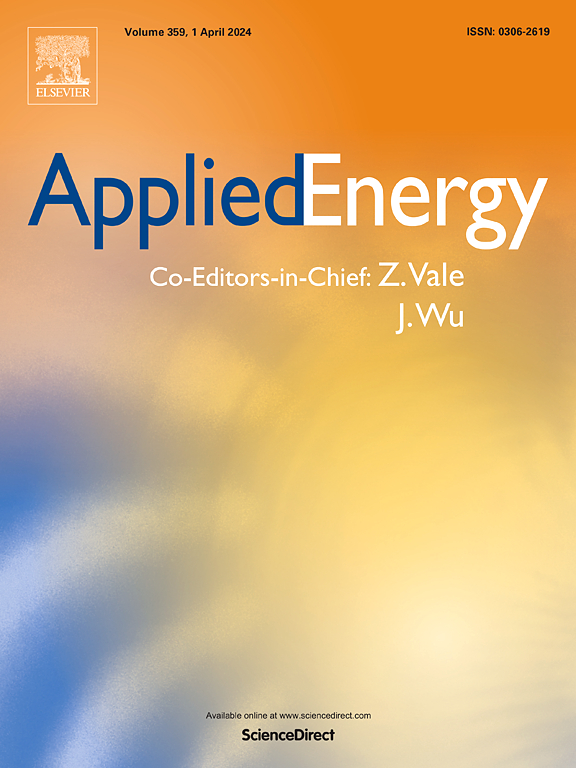Collaborative optimization framework for capacity planning of a prosumer-based peer-to-peer electricity trading community
IF 10.1
1区 工程技术
Q1 ENERGY & FUELS
引用次数: 0
Abstract
Peer-to-peer (P2P) electricity trading offers significant potential benefits for community microgrids, including reduced costs, enhanced demand flexibility, and increased self-sufficiency. However, optimizing the capacities (i.e., on-site renewable generation and battery storage) in a P2P trading environment is complex. This complexity is due to the dual need to achieve broad system objectives while catering to individual households' unique energy needs and preferences. To tackle this, our study proposes an innovative bi-level optimization framework that harmonizes these diverse needs through a collaborative approach that accounts for demand flexibility and network topology. At the heart of our method is a “collaborative optimization” process. This entails a synergistic planning strategy where system-wide objectives and individual household preferences are jointly considered to determine the optimal infrastructure setup. The upper level of the framework employs Borg Multiobjective Evolutionary Algorithm (MOEA) to reconcile various system-wide objectives, such as maximizing renewable energy use, minimizing costs, and ensuring grid stability. The lower-level optimization uses Mixed Integer Nonlinear Programming (MINLP) with a dynamic pricing mechanism based on Supply-Demand Ratio (SDR). Our results show that collaborative optimization significantly outperforms individual household optimization strategies (where households plan capacity independently before adopting P2P trading). In our case study, we observed a 24.6 % reduction in bi-monthly peak load averages with collaborative optimization, compared to a modest 10.2 % reduction under individual planning scenarios. This not only signifies enhanced efficiency but also translates into significant economic benefits. For instance, the investment payback period for solar photovoltaic (PV) panels and battery storage is drastically reduced—from an average of 5.1 years to just 1.8 years. Our findings highlight the significant economic and grid-stabilizing advantages gained through collaborative planning of P2P trading.
求助全文
约1分钟内获得全文
求助全文
来源期刊

Applied Energy
工程技术-工程:化工
CiteScore
21.20
自引率
10.70%
发文量
1830
审稿时长
41 days
期刊介绍:
Applied Energy serves as a platform for sharing innovations, research, development, and demonstrations in energy conversion, conservation, and sustainable energy systems. The journal covers topics such as optimal energy resource use, environmental pollutant mitigation, and energy process analysis. It welcomes original papers, review articles, technical notes, and letters to the editor. Authors are encouraged to submit manuscripts that bridge the gap between research, development, and implementation. The journal addresses a wide spectrum of topics, including fossil and renewable energy technologies, energy economics, and environmental impacts. Applied Energy also explores modeling and forecasting, conservation strategies, and the social and economic implications of energy policies, including climate change mitigation. It is complemented by the open-access journal Advances in Applied Energy.
 求助内容:
求助内容: 应助结果提醒方式:
应助结果提醒方式:


